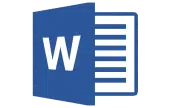Whether you’re planning to write a letter of recommendation or gathering the courage to ask for one from someone you admire, you’re not alone.
But unfortunately, many people struggle with understanding the complexity of a letter of recommendation, we all wish it was as easy as asking someone why they like us.
In this article, you’ll learn the definition of a letter of recommendation and its purpose when applying for a job.
Also, you’ll learn the five main parts of a letter of recommendation and how long the recommendation should be.
What Is a Letter of Recommendation?
A letter of recommendation provides accurate and personalized details about why a person would be a good fit for a potential job position.
Usually, a letter of recommendation highlights relevant information that isn’t shown in a resume or cover letter. It paints a picture of who you are through another person’s lens.
What Is the Purpose of a Letter of Recommendation?
A letter of recommendation aims to show that you’re suitable for the position in question. Along with the purpose, there are three main letters of recommendation types:
- Academic letters of recommendation
- Employment letters of recommendation
- Character reference letters
No matter the occasion, a letter of recommendation should include your work ethic, academic achievements, your personality, and community involvement.
Is a Letter of Recommendation Necessary?
More times than not, a letter of recommendation is necessary to receive a job. However, many companies only require contact information from references.
Then, they reach out and speak to your references directly, so they don’t need to write the letter.
Academic institutions are one of the most common places where you will need someone to write you a letter of recommendation, mainly to receive scholarships or be accepted.
Who Can Write a Letter of Recommendation?
In theory anyone can write a letter of recommendation, but you want to make sure you ask the right person.
Before asking for a letter of recommendation, think of who would be the best person to describe you on paper. Also, you’ll want somebody in a high position of authority to write your letter of recommendation because they can speak on your skills and strengths.
The best person to ask to write a letter of recommendation is someone who knows your work history and skills better than others.
You also want someone who has the ability to communicate those same qualities. You could have someone who you think would be perfect to tell them in person, but being able to put those words on paper is something you don’t want to take for granted.
It would be best if you asked someone who you’ve worked with recently, including:
- Colleagues
- Employers
- Others you’ve supervised
- Supervisors
- Teammates
On the other hand, if you have a former employer that would be a better match for the industry of the position you’re applying for, you can go with the former for a better letter of recommendation.
What Are the 5 Parts of a Letter of Recommendation?
There is always the possibility to use recommendation letter templates to make a tried and true letter of recommendation. However, you can break down a letter of recommendation into five parts and write it from square one.
Below we’ll go through each of the five parts in detail.
The Introduction
As with any letter, it needs to begin with the proper salutation. Some letters of recommendation can have a general salutation, meaning you direct the greeting toward anyone who may be reading.
For example, some of the common greetings are: “Dear Hiring Manager,” “Greetings,” and “To Whom it May Concern.”
The person writing your letter of recommendation uses the introduction as a first impression to the hiring manager. Many sample recommendation letters from an employer state why it’s their privilege to recommend the applicant in the introduction.
The introduction should include how you met the applicant and how long the two of you have known each other. If you’re a former employer, add how long the applicant worked for you.
In addition, the writer must include their personal expertise in the industry and their relationship to the applicant.
The Overview
After writing the introduction, the writer has to provide a brief overview of the strengths the applicant has exhibited in the time of knowing or working with them.
In the overview, a letter of recommendation specifies various examples that ensure you’re a qualified candidate. Typically, a writer would pick and choose different qualifications that relate to the job they’re applying for.
A Personal Story
Including a personal story displays an applicant’s individual traits and strengths. When you describe those traits through a personal story, the hiring manager can see your efficiency in the company.
Also, a personal story shows how well the letter’s author knows you. Finally, it gives the hiring manager a glimpse into who the applicant is as a person rather than a name on the resume.
The Conclusion
After you’ve given the proper details throughout the introduction and body paragraphs, it’s time to finish the letter of recommendation.
The conclusion summarizes what’s been previously written. So, you’re giving an overview of why the applicant would be the perfect fit for the position and why you recommend this person.
A hiring manager that’s reading a letter of recommendation wants to know exactly who the applicant is as a person. Then, after reading, you want to leave them with the perfect send-off for why they took the time to read.
In addition, the conclusion paragraph allows you to provide your contact information for the hiring manager. Offering to be available for follow up questions or more information ensures that you’re taking the role of reference seriously.
Here’s the information you should add in the conclusion paragraph:
- Best times to be reached
- Email address
- Phone number
- Work Schedule
Many hiring managers can reach out if they have further questions about offering the job position to an applicant.
Although it’s common, not every letter of recommendation needs a conclusion. If the letter has stated everything they need at the beginning of the letter, you can end the letter with your contact information as the final section.
Also, some opt to place the contact information under the closing signoff for a more concise letter.
Read a detailed explanation of the closing signoff below.
The Closing Sign Off
Finally, finishing your letter with a formal signoff means adding your name, title, company, and signature.
Providing your title ensures that the hiring manager knows they’re receiving a letter from someone with authority.
How Long Should a Letter of Recommendation Be?
Now that you understand the five main parts included in a letter of recommendation, you may feel overwhelmed with how much needs to be packed into the body of a letter.
However, the length of a letter of recommendation varies depending on your employment history and what the writer can say about the applicant.
In general, a letter of recommendation should be between three and five paragraphs. With five points to a letter, you can use each part as a separate paragraph.
Many recommendation letters are written single-spaced. The font size and margins allow for keeping the letter to one page. If a letter of recommendation goes on for pages, a hiring manager may lose interest in the candidate and grow bored with the writing.
Wrapping Up
A letter of recommendation is an excellent addition to any job application because it’s a personal addition from someone you respect and how you’d fit into a potential company.
Now that you know the definition, types of recommendation letters, and when to use them, feel free to comment below with any additional questions you may have.
Use this guide to help you in the job application process. Remember to consider the best people from your networking past to write your letter of recommendation and increase your chances of being hired for the job you want.









